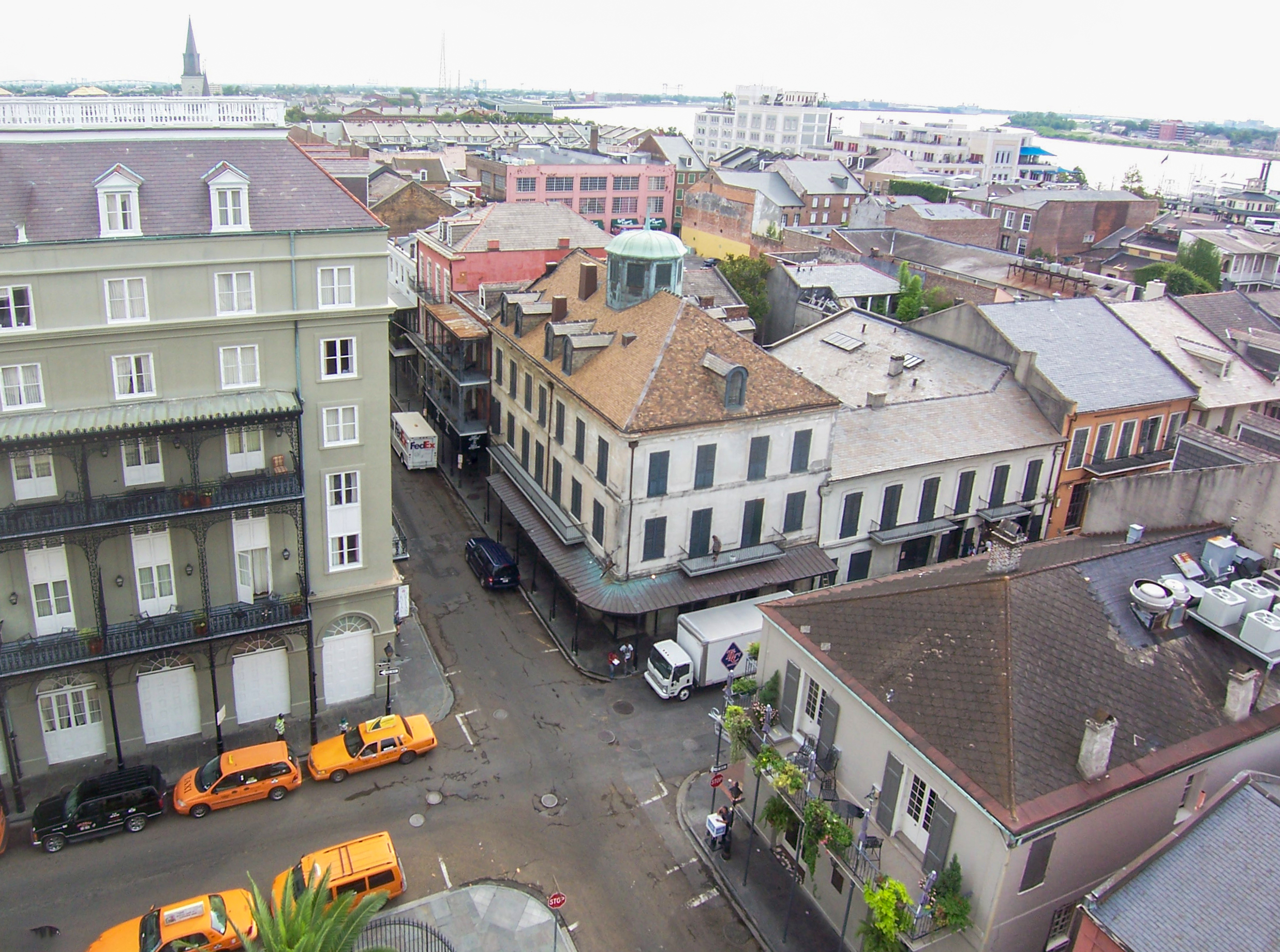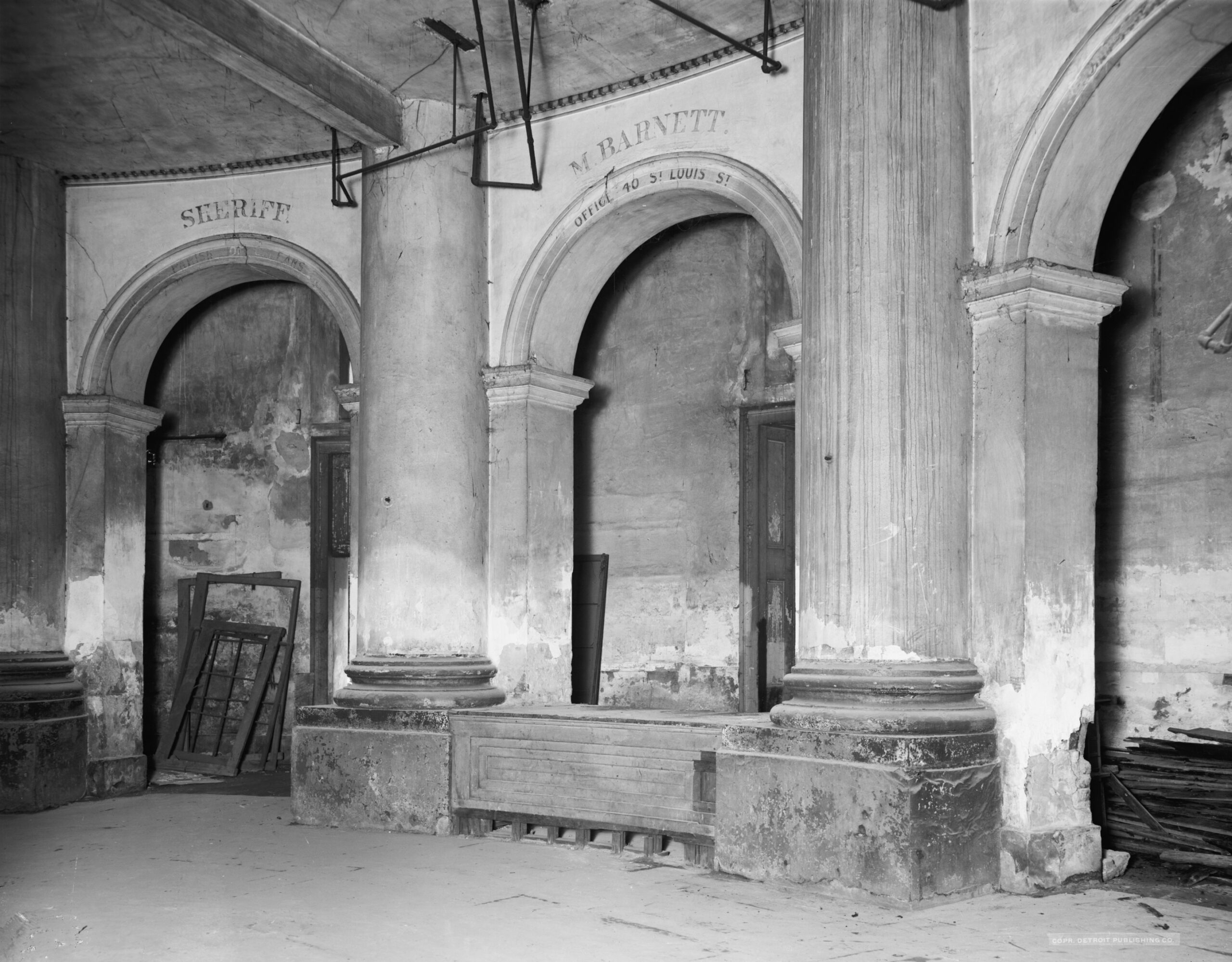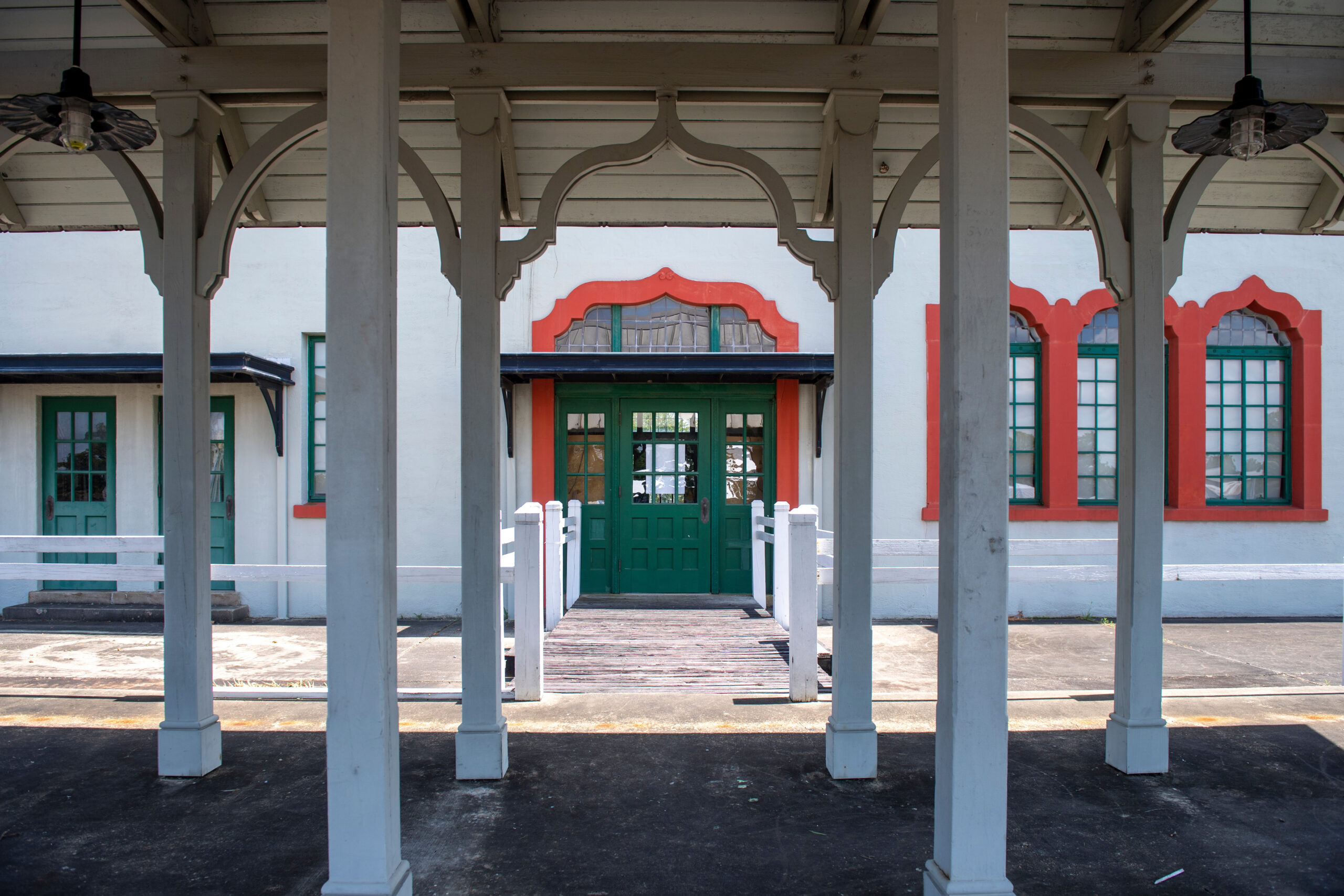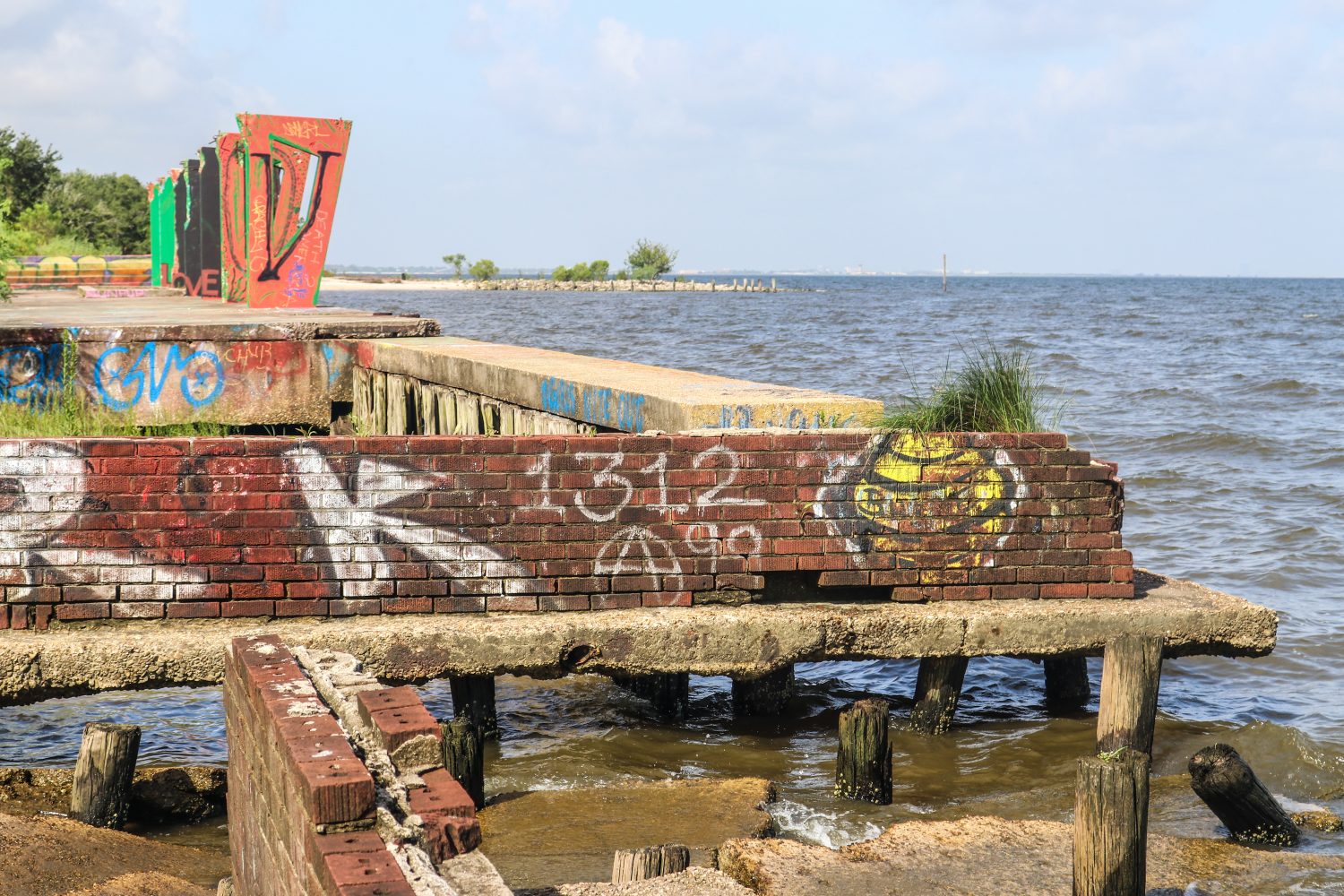This story appeared in the August/September issue of PRC’s Preservation in Print magazine. Interested in getting more preservation stories like this delivered to your door? Become a member of the PRC for a subscription!
Of all the intersections in the antebellum French Quarter, St. Louis at Chartres ranked among the busiest and most important. One observer in 1836 called Chartres Street “the ‘Broadway’ of New Orleans and the resort of the Fashionable of the City for Shopping and promenading,” known for its Parisian-style emporia catering to “the fine people of the City[,] the Creole population.” The renowned Creole luminary Bernard Marigny, writing in 1833, identified St. Louis Street as the main artery of Creole cultural and political life, bringing all the more salience to its intersection with Chartres Street.
On this corner was located the office of the region’s largest Francophone newspaper, L’Abeille de la Nouvelle Orléans, while upper Chartres in general had been home to the city’s publishing industry since the 1790s. Within a one-block radius of St. Louis and Chartres were offices of lawyers, notaries, factors, insurers, merchants and financiers, including the main Creole banking district at Conti and Royal, only one diagonal block away. Indeed, just about every major profession had a toehold on or near Chartres at St. Louis, and that included one of the most lucrative: slave-trading.
The domestic slave trade had a particular geography in New Orleans. From the 1810s to the outbreak of the Civil War, most victims arrived from the upper South and border states, either overland or coastwise, and were held at miserable “pens,” which by law were located in adjacent faubourgs, the high-density French Quarter being off-limits for public health concerns. In these prison-like compounds, enslaved people were prepared for the market, the transactions of which could take place between individual parties, through a private broker, or at a public auction held at “exchanges.”
 The intersection of St. Louis at Chartres streets today. In 1826, John Hewlett took over an exchange located at center left, where a modern hotel now stands. It was known as Hewlett’s Exchange, Hewlett’s Coffee House or the Exchange Coffee House. Photo by Richard Campanella.
The intersection of St. Louis at Chartres streets today. In 1826, John Hewlett took over an exchange located at center left, where a modern hotel now stands. It was known as Hewlett’s Exchange, Hewlett’s Coffee House or the Exchange Coffee House. Photo by Richard Campanella.
An exchange in this era was a full-service networking center catering to businessmen and their needs, providing everything from meeting rooms and financial services, to victuals and libations, to reading rooms and billiard halls. Exchanges were often called “coffee houses,” a loan translation of the French maison de café, which in Paris today refers to an establishment that serves coffee in the morning and alcohol later. Coffee houses or exchanges in 19th-century New Orleans were where white men of the ownership class met, socialized and negotiated — over coffee in daytime and over spirits as the shadows grew long. Because many patrons were visiting businessmen in town for the busy “commercial season,” coffee houses or exchanges often adjoined or expanded into opulent hotels, some of which became nationally famous. Catering to men, money and power, exchanges of all varieties became ideal venues for that curious spectacle of officialdom that were public auctions.
In 1810, an exchange called Tremoulet’s Commercial (or New Exchange) Coffee House opened at Chartres and St. Louis. Four years later, the enterprise became Maspero’s Exchange, and after Pierre Maspero’s death in 1822, it became Elkin’s Exchange. In 1826, John Hewlett took over the enterprise, after which it was known as Hewlett’s Exchange (La Bourse de Hewlett), Hewlett’s Coffee House, or the Exchange Coffee House.
Hewlett’s Exchange occupied a two-story, 55-foot-by-62-foot stucco-covered brick edifice with arched openings and a tile roof, in the parcel now numbered as 501 Chartres, facing the Girod (Napoleon) House. Though the building is long gone, you can get a rough idea of its appearance by turning to the opposite corner of 440 Chartres, observing that gray-colored storehouse (a contemporary of Hewlett’s, initially built in 1795, and now home to Pierre Maspero’s Restaurant), and visually transporting it to 501 Chartres, where now stands a service dock of the modern Royal Orleans Hotel.
Hewlett’s Exchange was designed to impress. Once a patron got past Venetian privacy screens shielding it from the street, he (exchanges were exclusively male spaces, in terms of clientele) would have seen wood and marble finishing beneath 19-foot-high ceilings, from which hung four 12-lamp chandeliers, their gas-powered light shining on framed maps, oil paintings (two depicting George Washington and Napoleon, and others described as “licentious”), and an enormous bar equipped with French glassware. Upstairs could be found billiards and gambling tables, though there were no affiliated lodging facilities.
From 1826 through the late 1830s, Hewlett’s Exchange buzzed with auctions held by city-authorized auctioneers, open to the public, and selling everything from land and houses, to ships, cargo, equipment, sugar kettles, men, women and children. The city’s seven auctioneers called their bids in French, Spanish and English, six days a week during most daylight hours. In 1830, for example, Joseph Le Carpentier worked Mondays, Wednesdays and Saturdays; Toussaint Mossy (who also presided over the New Orleans Architect Company) took Tuesdays and Fridays; H. J. Domingon, George Boyd and Joseph Baudue worked Tuesdays, Thursdays and Saturdays; and Francois Dutillet and Isaac McCoy were at Hewlett’s Exchange all six days per week. A flier printed in May 1835 evidenced that John Hewlett was also a slave owner and trader, in a partnership identified as Hewlett & Bright, and used his own exchange to do the selling, in this case of 10 men, women and children, ages 45 down to 7.
This circa-1906 photograph of the interior of the former St. Louis Exchange Hotel, which replaced Hewlett’s Exchange in the 1840s, is said to show the old block where slaves would have stood during auctions. The hotel was demolished in 1916. Photo courtesy of Library of Congress.
A diary written by James D. Davidson in 1836 described the scene inside: “Hewlett’s Exchange is upon Chartres Street. It is here that ‘merchants do most congregate.’ In it [there are] auctions of Slaves. Lots do take place. From 10 A.M. to 3 P.M., it is a scene of tumultuous confusion, in which all the business and professional men of the city engage. It seems to be the Soul of New Orleans.” Alluding to Hewlett’s reputation as something of a lurid tourist attraction, Davidson stated “he [who] does not visit it cannot [claim to have] seen all of New Orleans.”
The spectacle inside gave visiting commentators an opportunity to reflect on the institution of slavery. Davidson came across as rather ambivalent, describing how enslaved people in the pens “were dressed up neatly for the occasion [of auction], the women with turbaned handkerchiefs upon their heads, which improve their appearance very much. They are thus marched in a line into the Streets to some public Corner, or Exchange, where they remain from day to day until sold. I was surprised to find them looking as cheerful and unconcerned as they did.” But that assessment changed once the victims arrived to the block. “I saw a likely negro woman and her three children selling here at public auction,” Davidson wrote of Hewlett’s. “The mother and children wept bitterly during the sale. I pitied them. But the people here are hardened to such things, and they look upon them with indifference. I saw others sold, but they appeared to be cheerful.” (That apparent cheer may have been designed to manipulate prospective masters toward less severe treatment. Said one victim of the auction block, 86-year-old Frank Bell interviewed in 1937, “Yessir, I’se seen several slaves sold[;] Boy oh boy they would shout and holler and laugh cause they say if [a new] master on the farm bought them they have good master.”)
English abolitionist Edward Strutt Abdy reviled what he had gleaned from a visitor during 1833-1834. “Slaves for sale at New Orleans are publicly exposed at the mart, or auction-room; the men ranged on one side, and the women on the other,” he wrote of his learnings. “Purchasers are in the habit of examining the mouth and the limbs[;] the joints are tried, and turned, to see if they are strong and supple. Should the back, or shoulders, or any other part of the body, exhibit marks of frequent or severe flogging, the ‘animal’ is set aside, as rebellious and refractory.”
Certain weeks in the spring of 1828 and again in 1831 are of particular historical interest at Hewlett’s Exchange, because it so happened that a young Hoosier by the name of Abraham Lincoln was in town at those times, having delivered a load of farm produce via flatboat. Hewlett’s being well-known and centrally located, and Lincoln being an inquisitive 19-year-old in a big exotic city for the first time, it’s plausible to imagine the future Great Emancipator witnessing a slave auction here. By my research, at least 31 slaves changed owners at Hewlett’s during Lincoln’s 1828 visit, as did more than 170 people during his 1831 visit. Citywide documents analyzed by other historians, including conveyance records of real property transactions and “Certificates of Good Character” stored in the Notarial Archives, put the total number of slave purchases for the year 1830 at 4,435. Scaling up Hewlett’s weeks-long figures for 1828 and 1831 to the length of a year, we may surmise that Hewlett’s Exchange accounted for a substantial share — at least a quarter, perhaps well over a third — of all the purchases of human beings in the nation’s premier slave-trading city.
Hewlett’s Exchange was demolished later in the 1830s to make room for the St. Louis Exchange Hotel, slated for the entire adjoining block of St. Louis Street. Opened in 1838 and later described by the Daily Picayune as “the pride of New Orleans and of Louisiana, the wonder and admiration of strangers, the most gorgeous edifice in the Union,” the St. Louis catered to businessmen and continued to hold slave auctions under its rotunda. The original hotel burned in 1840 but was promptly rebuilt and reopened in 1842, where slave auctions continued into the early 1860s. As for John Hewlett, he reopened Hewlett’s Exchange on the American side of town, on the corner of Common and Camp, and later expanded it into an exchange hotel.
In 1916, the former St. Louis Exchange Hotel, in decline since the Civil War and damaged by a recent hurricane, finally met the wrecking ball, but not before its “old slave block” had been photographed and featured on post cards. Of the 1842 edifice, only a series of storehouses remained standing on Chartres Streets. Preservation architect Samuel Wilson Jr. managed to incorporate a façade fragment into the construction of the Royal Orleans Hotel, built to emulate the old St. Louis and opened in 1960. If one looks upon the entablature of that fragment facing Chartres Street, next to the space where the original Hewlett’s once stood, the word “Exchange” is still visible.
Richard Campanella is a geographer with the Tulane School of Architecture and author of The West Bank of Greater New Orleans; Cityscapes of New Orleans; Bourbon Street: A History; and other books. Campanella may be reached through richcampanella.com, rcampane@tulane.edu, or@nolacampanella on Twitter.






